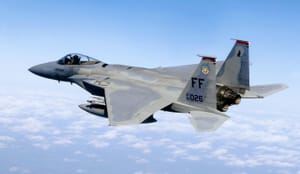
Oct 2, 2023
X-66A: The Future of Air Travel?
As humanity pushes towards zero carbon emissions, many obstacles stand in the way. These obstacles pertain to many things, from energy production, land use, industries, and of course, transportation.
The air industry produces around 2.5% of all CO2 emissions every year. Which doesn't sound like a lot. However, while it may not be the biggest polluter, its one of the fastest growing sources of pollution. In 2050, when many nations want to achieve zero carbon emissions, the aviation industry is going to double in passenger volume. In fact, since 2013-2019, the amount of CO2 put into the atmosphere via air travel, grew by nearly 30%. In six years, air travel went from outputting 641 million metric tons (707 million tons) to 834 million metric tons (920 million tons) of CO2.
As air travel plays an important role in both nations economies and the connection between people around the globe, simply reducing our use of planes, is not going to happen. So, what can be done?
New Technology, Better Planes
Air travel is going to continue its growth and expansion, for at least the foreseeable future. This means, that new technology needs to be implemented into the air industry, if we ever want humanity to reach zero carbon emissions.
As of now, alternative fuels that have little to no emissions, such as Hydrogen fuel cells, are still in the early phases of design and testing. More funding and research should be poured into alternative fuels for ships and aircraft alike.
While changing the type of fuel airlines use is a very important step, increasing fuel efficiency is another important piece of the puzzle. Even when planes are eventually running on little to no emission fuels, having fuel efficient and streamlined designs are still important.
The TTBW and how it may help
The "Transonic Truss Braced Wing" is a proposed architectural design change, that could increase fuel efficiency. The TTBW, helps support the wings, meaning the wings themselves can be thinner. This reduces drag, which reduces fuel consumption. NASA expects the TTBW concept to reduce fuel consumption by "up to 10 percent." While that may not sound like a lot, the TTBW, mixed with advances in propulsion technology and materials, could make aircraft up to 30% more fuel efficient.

This streamlined wing design, will primarily be used on single aisle aircraft, such as the MD-90. The MD-90 is a single aisle aircraft, which is one of the most common aircraft flown by airlines. Since, single aisle aircraft are operated by nearly every airline on the planet, advances in fuel efficiency can have major impact on a global scale. So, testing the TTBW on single aisle aircraft, like the MD-90 is important.
As air travel continues to grow, researching and developing new technology to streamline efficient designs, is important. The Transonic Truss Braced Wing seems like a right step towards more efficient aircraft.
However, until real world testing is complete, we won't know how well the TTBW design fairs.

